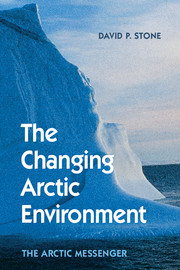Book contents
- Frontmatter
- Dedication
- Contents
- Acknowledgements
- Acronyms
- 1 Personal Beginnings
- PART I THE CHANGING ARCTIC
- PART II WORKING TOGETHER
- PART III WHAT IS THE PRESENT STATE OF KNOWLEDGE?
- PART IV WHAT DOES ALL THIS MEAN?
- Appendix I The Intergovernmental Panel on Climate Change (IPCC)
- Appendix II What Will Happen in the Future If We Do Nothing or If We Try Very Hard to Aggressively Reduce GHG Emissions: Projected Change Under Different Emission Scenarios
- Appendix III Some Geophysical Background Notes Related to Climate and Weather
- Appendix IV Orbital Forcing
- Appendix V The Concept of Commitment
- Bibliography
- Credits
- Index
Appendix IV - Orbital Forcing
Published online by Cambridge University Press: 05 February 2015
- Frontmatter
- Dedication
- Contents
- Acknowledgements
- Acronyms
- 1 Personal Beginnings
- PART I THE CHANGING ARCTIC
- PART II WORKING TOGETHER
- PART III WHAT IS THE PRESENT STATE OF KNOWLEDGE?
- PART IV WHAT DOES ALL THIS MEAN?
- Appendix I The Intergovernmental Panel on Climate Change (IPCC)
- Appendix II What Will Happen in the Future If We Do Nothing or If We Try Very Hard to Aggressively Reduce GHG Emissions: Projected Change Under Different Emission Scenarios
- Appendix III Some Geophysical Background Notes Related to Climate and Weather
- Appendix IV Orbital Forcing
- Appendix V The Concept of Commitment
- Bibliography
- Credits
- Index
Summary
There are three main orbital cycles that are known as the Milankovitch cycles and which concern how Earth moves around the sun. They are:
1.Orbital eccentricity:
The shape of Earth's orbit varies over a cycle of 100,000 years – from being nearly circular to mildly elliptical. At present, we are near the minimum of the cycle (almost circular), with only about a 6% difference in the amount of solar energy reaching Earth between perihelion (smallest Earth-sun distance) and aphelion (largest distance). However, when Earth's orbit is at its most elliptical, this solar energy difference is between 20 and 30%, which significantly increases or reduces the amount of energy received by Earth during different seasons, even though the net energy gain will be more or less constant.
2.Obliquity (axial tilt):
The tilt or inclination of Earth's axis of rotation in relation to the plane of the orbit around the sun oscillates between 21.5 and 24.5 and with a periodicity of about 41,000 years. The greater the tilt, the greater is the difference between our seasons. At present, we are located roughly in the middle of the obliquity cycle.
3.Precession of the equinoxes:
To understand this cycle, I find it easier to temporarily forget about the variation in axial tilt. Earth has a slow wobble as it spins on its axis. Although the angle of tilt remains the same, the direction of tilt will vary with time around Earth's orbit (wobble) over a 23,000-year cycle. At the present time, the direction of tilt is such that the North Pole is most inclined away from the sun (winter solstice) at perihelion (when Earth is closest to the sun) and most inclined towards the sun (summer solstice) at aphelion (when Earth is furthest from the sun). However, in 11,000 years, the slow wobble will mean Earth will be most inclined away from the sun at aphelion and most inclined towards the sun at perihelion.
- Type
- Chapter
- Information
- The Changing Arctic EnvironmentThe Arctic Messenger, pp. 318 - 319Publisher: Cambridge University PressPrint publication year: 2015



